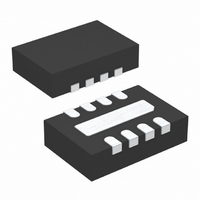LT3020EDD-1.5#TR Linear Technology, LT3020EDD-1.5#TR Datasheet - Page 10

LT3020EDD-1.5#TR
Manufacturer Part Number
LT3020EDD-1.5#TR
Description
IC REG LDO 1.5V 100MA LV 8-DFN
Manufacturer
Linear Technology
Datasheet
1.LT3020EDDPBF.pdf
(16 pages)
Specifications of LT3020EDD-1.5#TR
Regulator Topology
Positive Fixed
Voltage - Output
1.5V
Voltage - Input
Up to 10V
Voltage - Dropout (typical)
0.15V @ 100mA
Number Of Regulators
1
Current - Output
100mA
Current - Limit (min)
110mA
Operating Temperature
-40°C ~ 125°C
Mounting Type
Surface Mount
Package / Case
8-DFN
Lead Free Status / RoHS Status
Contains lead / RoHS non-compliant
Available stocks
Company
Part Number
Manufacturer
Quantity
Price
APPLICATIO S I FOR ATIO
LT3020/LT3020-1.2/
LT3020-1.5/LT3020-1.8
an output current change of 1mA to 100mA is typically
0.4mV at V
Output Capacitance and Transient Response
The LT3020’s design is stable with a wide range of output
capacitors, but is optimized for low ESR ceramic capaci-
tors. The output capacitor’s ESR affects stability, most
notably with small value capacitors. Use a minimum
output capacitor of 2.2µF with an ESR of 0.3Ω or less to
prevent oscillations. The LT3020 is a low voltage device,
and output load transient response is a function of output
capacitance. Larger values of output capacitance decrease
the peak deviations and provide improved transient re-
sponse for larger load current changes. For output capaci-
tor values greater than 20µF a small feedforward capacitor
with a value of 300pF across the upper divider resistor (R2
in Figure 1) is required.
Give extra consideration to the use of ceramic capacitors.
Manufacturers make ceramic capacitors with a variety of
dielectrics, each with a different behavior across tempera-
ture and applied voltage. The most common dielectrics are
Z5U, Y5V, X5R and X7R. The Z5U and Y5V dielectrics
provide high C-V products in a small package at low cost,
but exhibit strong voltage and temperature coefficients.
The X5R and X7R dielectrics yield highly stable
characterisitics and are more suitable for use as the output
capacitor at fractionally increased cost. The X5R and X7R
dielectrics both exhibit excellent voltage coefficient char-
acteristics. The X7R type works over a larger temperature
range and exhibits better temperature stability whereas
X5R is less expensive and is available in higher values.
Figures 2 and 3 show voltage coefficient and temperature
coefficient comparisons between Y5V and X5R material.
Voltage and temperature coefficients are not the only
sources of problems. Some ceramic capacitors have a
piezoelectric response. A piezoelectric device generates
voltage across its terminals due to mechanical stress, simi-
lar to the way a piezoelectric accelerometer or microphone
works. For a ceramic capacitor, the stress can be induced
by vibrations in the system or thermal transients. The re-
sulting voltages produced can cause appreciable amounts
of noise. A ceramic capacitor produced Figure 4’s trace in
10
(1.5V/200mV) • (0.4mV) = 3mV
ADJ
= 200mV. At V
U
U
OUT
= 1.5V, load regulation is:
W
U
Figure 4. Noise Resulting from Tapping on a Ceramic Capacitor
1mV/DIV
Figure 3. Ceramic Capacitor Temperature Characteristics
Figure 2. Ceramic Capacitor DC Bias Characteristics
–100
–100
–20
–40
–60
–80
–20
–40
–60
–80
V
C
I
LOAD
20
40
20
OUT
OUT
0
0
–50
0
= 1.3V
= 10µF
= 0
BOTH CAPACITORS ARE 16V,
1210 CASE SIZE, 10µF
–25
2
4
DC BIAS VOLTAGE (V)
0
TEMPERATURE (°C)
BOTH CAPACITORS ARE 16V,
1210 CASE SIZE, 10µF
6
25
1ms/DIV
8
Y5V
X5R
50
10
Y5V
75
12
X5R
100
14
3020 F03
3020 F02
125
16
3020 F04
3020fc













